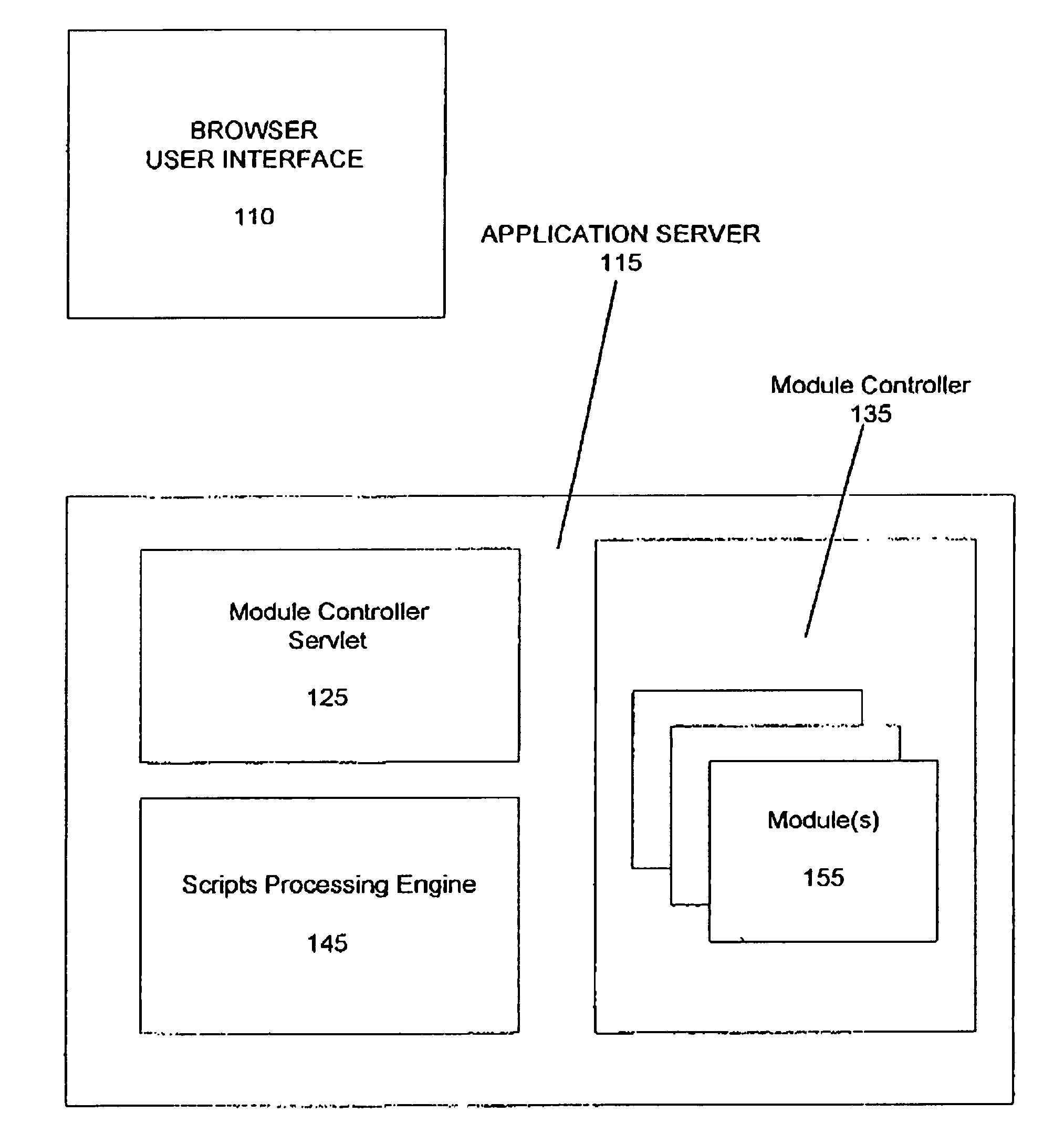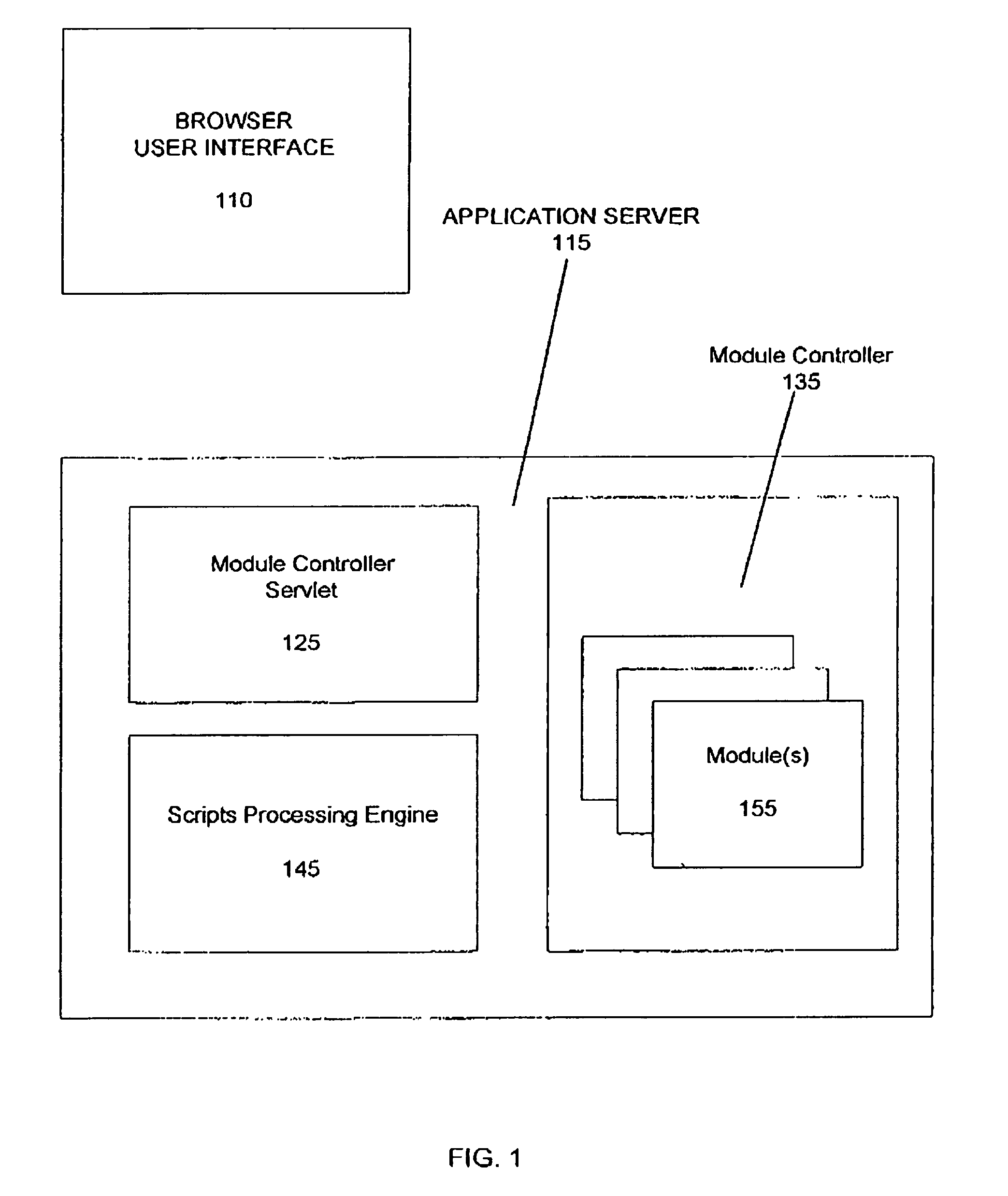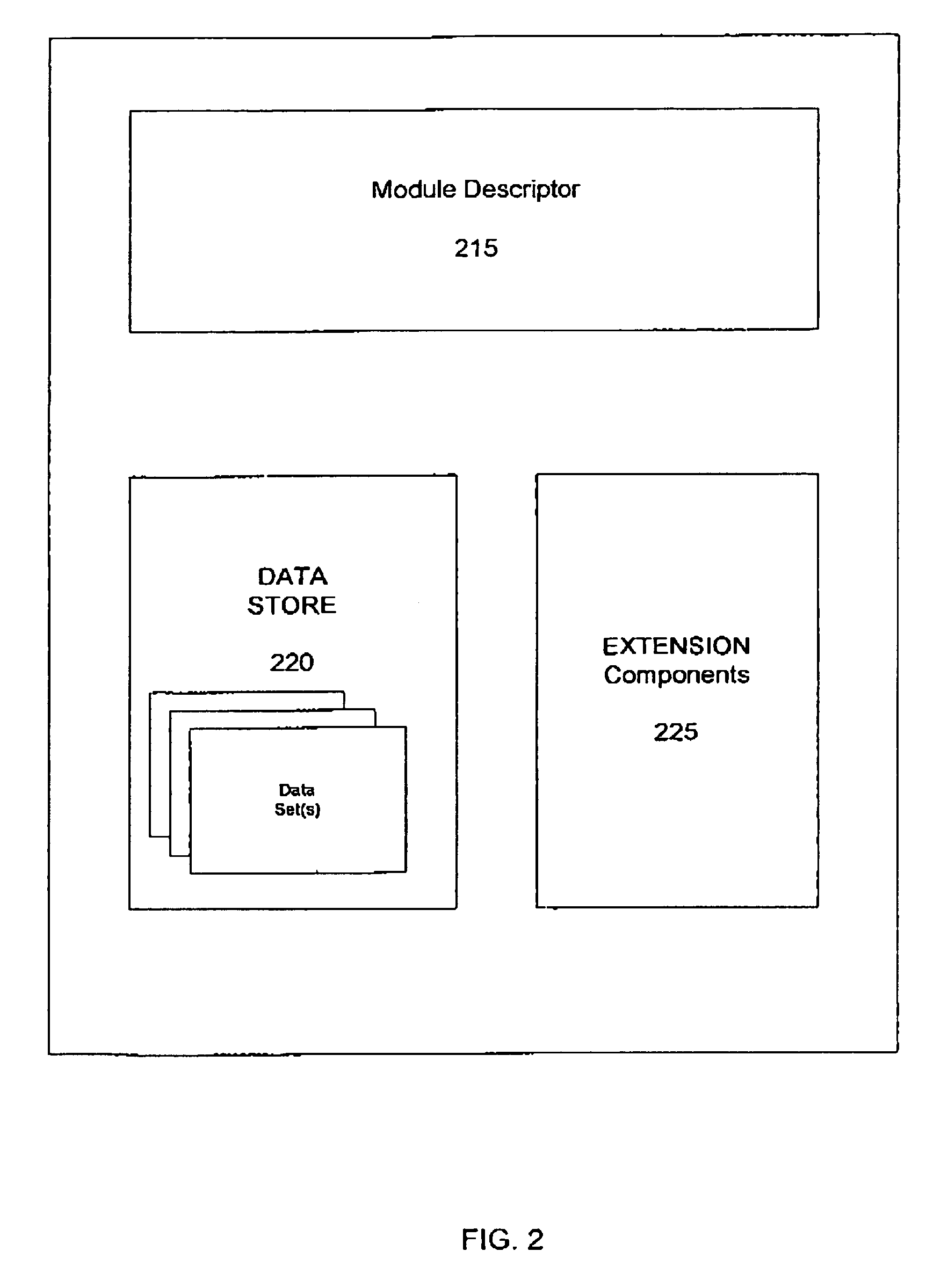Method and software system for modularizing software components for business transaction applications
a business transaction and software component technology, applied in the field of computer application development, can solve the problems of slow support or modification of the application, time-consuming and problematic, and limited processing capabilities of the browser itself, and achieve the effect of reducing design analysis and effort, rapid design, production and modification, and avoiding time-consuming software component coding changes
- Summary
- Abstract
- Description
- Claims
- Application Information
AI Technical Summary
Benefits of technology
Problems solved by technology
Method used
Image
Examples
Embodiment Construction
[0027]FIG. 1 is a functional block diagram which illustrates the components of a system in which a preferred embodiment of the present invention is implemented. As shown, the system includes a browser 110, implemented on a local pc or computer terminal, and an application server 115 which is coupled to the local pc or computer terminal.
[0028]The browser 110 may be any type of conventional web browser program, which interprets HTML language, such as Microsoft Internet Explorer or Netscape Navigator. The browser is used to render pages generated or served by the application server 115. Preferably, the browser supports a client-side scripting language, such as JavaScript™. This language is used to manage the user presentation interface (such as respond to button clicks by the user). A client-side scripting language is also used to develop server-side scripts, which are sent to the application server for processing, and which in turn invoke business logic processing. In a preferred embo...
PUM
 Login to View More
Login to View More Abstract
Description
Claims
Application Information
 Login to View More
Login to View More - R&D
- Intellectual Property
- Life Sciences
- Materials
- Tech Scout
- Unparalleled Data Quality
- Higher Quality Content
- 60% Fewer Hallucinations
Browse by: Latest US Patents, China's latest patents, Technical Efficacy Thesaurus, Application Domain, Technology Topic, Popular Technical Reports.
© 2025 PatSnap. All rights reserved.Legal|Privacy policy|Modern Slavery Act Transparency Statement|Sitemap|About US| Contact US: help@patsnap.com



